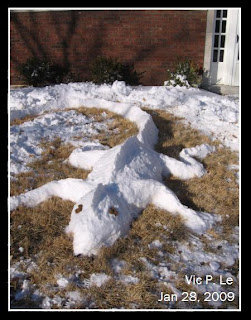This is what relaxation looks like. The arm belongs to Richie's dad.

Diet
Everything starts out with Richard's diet. I meticulously "gutload" the prey items that Richard receives.
The obvious exceptions:
- Waxworms - which eat honey and are given only as treats
- Mice - "whole prey" which are highly nutritious on their own
Since I believe that people should do their own homework for their pets, I won't reveal what the supplement is, not that the information is difficult to find in the first place. Animal husbandry is something that takes effort and dedication!
I also try to not over-feed Richard. While it is said that water dragons know "when to stop", I still want to make sure that he doesn't get too fat.
Shedding
I prefer to take photos when Richard isn't shedding large parts of his body. A shedding lizard looks grayish! This is what he looks like when he's shedding his face:
Not very pretty, huh?

Lighting
It's my experience that indirect natural light is the most flattering for Richard. His scales reflect natural sunlight very beautifully, as you would expect. The above photo was taken under hideous ceiling-fan incandescent light bulbs, showing a more muted green. Direct sunlight tends to wash his scales out. Also, scales can appear to have a different color, depending on what angle they are being photographed from. This is because the scales have a grain, like shingles.
Don't get me wrong: Richard's scales ARE very green. But what you see, way something is, and what you capture with a camera can be very different just because of your vantage point, the spectrum of light involved, and the way light behaves. We're not hear to talk physics, though. :-P
Richard
Don't get me wrong: Richard's scales ARE very green. But what you see, way something is, and what you capture with a camera can be very different just because of your vantage point, the spectrum of light involved, and the way light behaves. We're not hear to talk physics, though. :-P
Richard
If it weren't for his closed eyes, I'd choose his resting state for photos all the time!
Richard can also change the intensity of the stripes on his body. When he sleeps, the stripes are PALER than the rest of his body. When he's afraid, the stripes can be much darker (black, in fact) than his body. Because the stripes are isolated to certain scales, they appear "pixellated."
This is why Richard's coloration can vary dramatically from photo to photo.
I take tons of photos
I take a lot of photos so I have more photos to choose from. Many of my photos aren't taken under optimal conditions! But I tend to not post those because it takes time and energy to add borders, credits, and watermarks.










